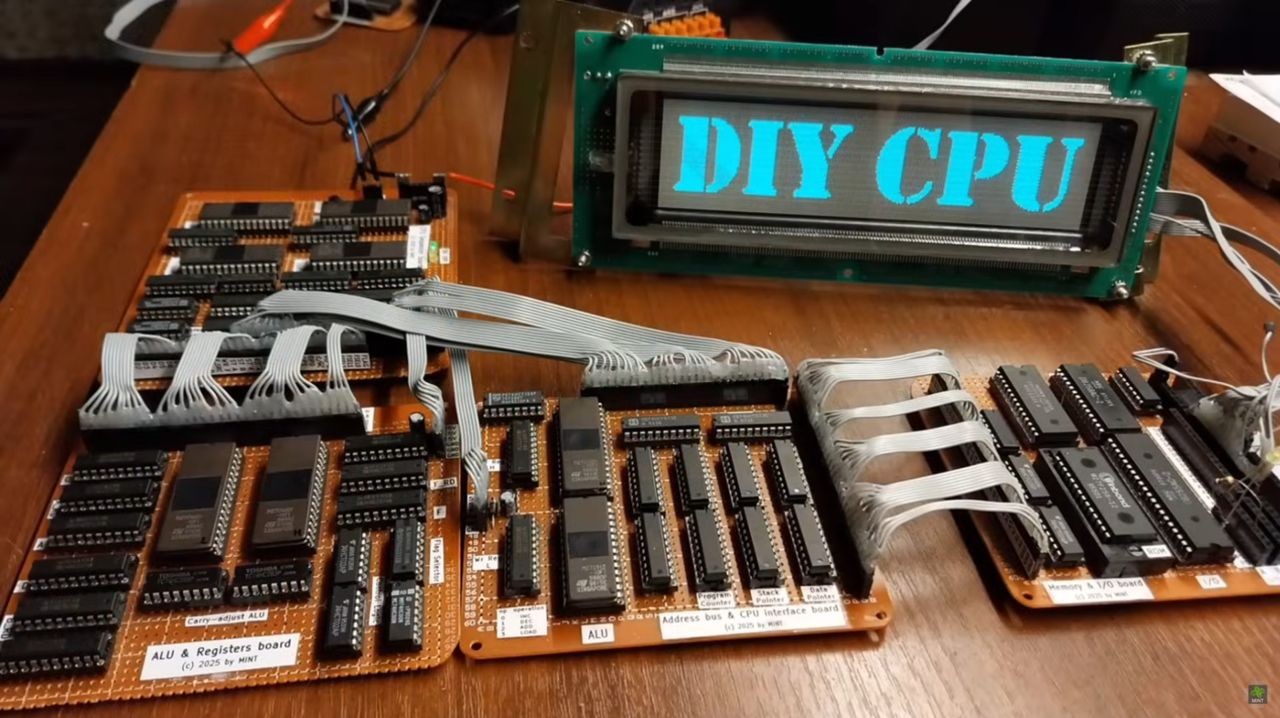Introduction
In a world dominated by cutting-edge technology and rapid advancements in computing, a remarkable story from Poland has captured the imagination of tech enthusiasts worldwide. This is the tale of a DIY project that stands out not just for its ambition, but for its successful execution against the odds. A self-proclaimed “mad scientist” has managed to build his own CPU using an array of ancient memory chips, bringing a new twist to the concept of DIY computing. This project is a testament to the ingenuity and persistence of hobbyists who push the boundaries of what’s possible outside of corporate labs and manufacturing plants.
The Vision and Genesis
At the heart of this project is the visionary behind it—a Polish DIY enthusiast whose passion for retro computing and electronics led to this extraordinary endeavor. The inspiration for this project was rooted in the desire to repurpose and breathe new life into outdated technology, specifically memory chips that have long been relegated to the annals of computing history. This project involved not just technical know-how but a deep understanding of computing architectures from a bygone era.
The Challenge of Repurposing Memory Chips
- Utilizing obsolete technology in modern applications
- Overcoming compatibility issues with contemporary systems
- Designing a functional architecture from non-standard components
Building the CPU: A Step-by-Step Journey
The construction of a CPU from scratch is a monumental task, even for seasoned engineers, let alone a self-taught hobbyist. The process began with the collection of dozens of memory chips, which were meticulously sourced from various outdated devices. These chips, once part of larger systems, were repurposed and integrated into a singular, cohesive unit capable of executing basic computing functions.
Technical Specifications and Process
| Component | Specification |
|---|---|
| Memory Chips Used | Dozens of 1980s-era chips |
| Architecture | Custom-built for compatibility |
| Clock Speed | Variable, dependent on chip capabilities |
| Power Supply | Modified for low-power operation |
Engineering Obstacles and Solutions
- Creating a new logic gate structure from existing memory chips
- Developing a compatible motherboard to host the CPU
- Ensuring stability and reliability of the constructed CPU
Implications and Impact
This project is more than just a fascinating technical achievement; it serves as an inspiration for the broader tech community. It challenges the notion that groundbreaking work can only be done with the latest technology and significant funding. Instead, it highlights the potential for creativity and innovation using resources that are readily available and often overlooked.
Community and Industry Reactions
- Tech enthusiasts laud the project for its creativity and execution
- Retro computing communities celebrate the revival of obsolete technologies
- Experts acknowledge the project’s contribution to DIY and educational initiatives
The Future of DIY Computing
The success of this project opens up new avenues for DIY enthusiasts and educators alike. It suggests that there are untapped possibilities in using older technologies in novel ways, providing a platform for experimentation and learning. This project could inspire similar initiatives, where technology enthusiasts leverage their understanding of legacy systems to create something new and unique.
Potential for Educational Use
- Encouraging hands-on learning experiences in electronics and computing
- Providing a cost-effective means to teach fundamental computing concepts
- Demonstrating the principles of computer architecture and logic design
Source: A DIY mad scientist from Poland built his own CPU out of dozens of ancient memory chips
Tags: DIY computing, retro technology, CPU construction, innovation, tech enthusiasts
Image source: Original Article





